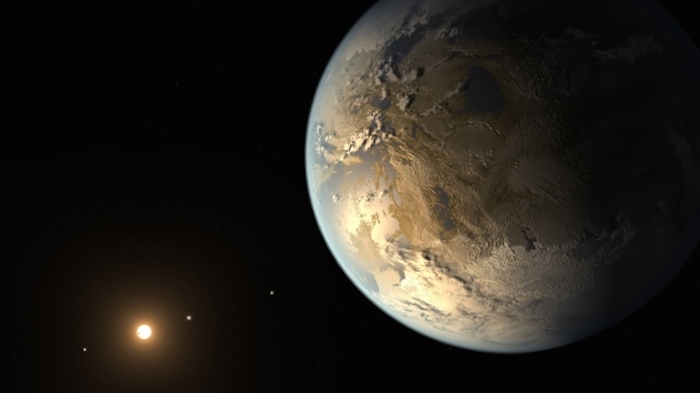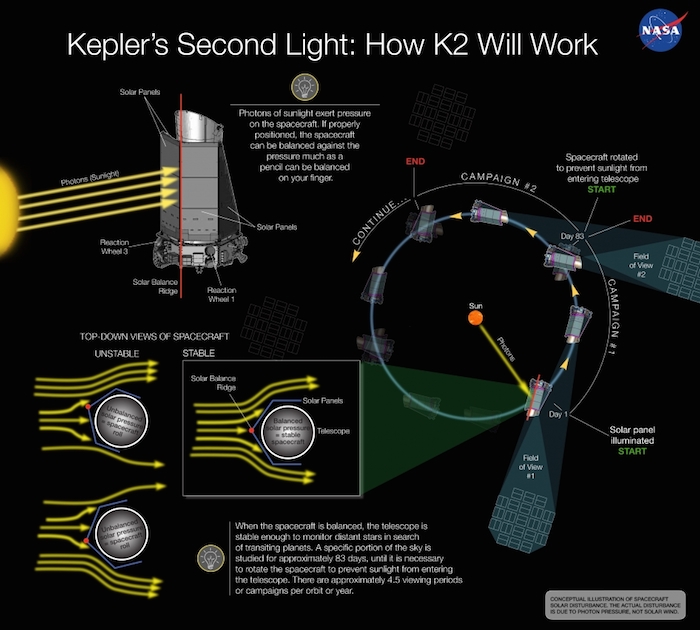.
29.12.2014

Nearly everyone agrees that the next big step would be a space telescope that could observe alien worlds directly. (Kepler uses indirect methods to infer the existence of extrasolar planets.) Back in 2000, NASA even started planning such a spacecraft. But those dreams foundered on the potential cost of the mission, and on the lack of technologies to make it happen.
A direct-imaging telescope would use one of two methods to block out the light of host stars and let it detect much fainter planets in orbit around them. One approach is a coronagraph, a disc that sits inside a space telescope and blocks the light of the central star so that the planet pops into view. WFIRST is currently planned to have a coronagraph that would enable it to image exoplanets directly, but the instrument may be cut for budgetary reasons. Another option is a starshade, an orbiting piece of opaque material that would position itself at some distance from a space telescope and block the star’s light from there.
“We’d all be very disappointed if there wasn’t some kind of imaging mission in the next decade, given how exciting and vibrant this field is,” says Suvrath Mahadevan, an exoplanet researcher at Pennsylvania State University in University Park.
For now, the European Space Agency is planning PLATO (Planetary Transits and Oscillations of Stars), a 2024 exoplanet mission that would not image planets directly. And US astronomers will keep trying to pick up more bits of information about exoplanets. The Transiting Exoplanet Survey Satellite, a NASA mission scheduled for 2017, will hunt for planets crossing the faces of half a million nearby bright stars. And the James Webb Space Telescope, due to launch in 2018, will explore clouds and atmospheres on relatively small exoplanets — although it is unlikely to see anything as small as Earth.
Still, those upcoming missions do not really address the question of whether humans are alone in the cosmos, says Aki Roberge, an astrophysicist at the Goddard Space Flight Center in Greenbelt, Maryland. “I believe the time is near,” she says, “when we should really try to tackle it with a mission capable of finding habitable conditions on nearby Earth-like worlds and seeing if they might support life.”
Will We Find Extraterrestrial Life In 2015?

